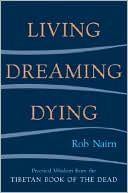Category Books
- Fiction Books & Literature
- Graphic Novels
- Horror
- Mystery & Crime
- Poetry
- Romance Books
- Science Fiction & Fantasy
- Thrillers
- Westerns
- Ages 0-2
- Ages 3-5
- Ages 6-8
- Ages 9-12
- Teens
- Children's Books
- African Americans
- Antiques & Collectibles
- Art, Architecture & Photography
- Bibles & Bible Studies
- Biography
- Business Books
- Christianity
- Computer Books & Technology Books
- Cookbooks, Food & Wine
- Crafts & Hobbies Books
- Education & Teaching
- Engineering
- Entertainment
- Foreign Languages
- Game Books
- Gay & Lesbian
- Health Books, Diet & Fitness Books
- History
- Home & Garden
- Humor Books
- Judaism & Judaica
- Law
- Medical Books
- New Age & Spirituality
- Nonfiction
- Parenting & Family
- Pets
- Philosophy
- Political Books & Current Events Books
- Psychology & Psychotherapy
- Reference
- Religion Books
- Science & Nature
- Self Improvement
- Sex & Relationships
- Social Sciences
- Sports & Adventure
- Study Guides & Test Prep
- Travel
- True Crime
- Weddings
- Women's Studies
Living, Dreaming, Dying: Wisdom for Everyday Life from the Tibetan Book of the Dead »

Authors: Rob Nairn, Seventeenth Karmapa
ISBN-13: 9781590301326, ISBN-10: 1590301323
Format: Paperback
Publisher: Shambhala Publications, Inc.
Date Published: August 2004
Edition: (Non-applicable)
Author Biography: Rob Nairn
Rob Nairn's training in psychology and Buddhist practice brings him a unique ability to explain ancient Eastern concepts in modern, accessible terms. The author of What Is Meditation? and Diamond Mind, he is sought after internationally as a lecturer on Buddhist philosophy and meditation.
Book Synopsis
The Tibetan Book of the Dead is one of the best-known Tibetan Buddhist texts. It is also one of the most difficult texts for Westerners to understand. In Living, Dreaming, Dying, Rob Nairn presents the first interpretation of this classic text using a modern Western perspective, avoiding arcane religious terminology, keeping his explanations grounded in everyday language. Nairn explores the concepts used in this highly revered work and brings out their meaning and significance for our daily life. He shows readers how the Tibetan Book of the Dead can help us understand life and self as well as the dying process.
Living, Dreaming, Dying helps readers to "live deliberately"—and confront death deliberately. One thing that prevents us from doing that, according to Nairn, is our tendency to react fearfully whenever change occurs. But if we confront our fear of change and the unknown, we can learn to flow gracefully with the unfolding circumstances of life rather than be at their mercy.
Of course, change occurs throughout our life, but a period of transition also occurs as we pass from the waking state into sleep, and likewise as we pass into death. Therefore the author's teachings apply equally to living as well as to dreaming and dying.
Through meditation instructions and practical exercises, the author explains how to:
• Explore the mind through the cultivation of deep meditation states and expanded consciousness
• Develop awareness of negative tendencies
• Use deep sleep states and lucid dreaming to increase self-understanding as well as to "train" oneself in how to die so that one is prepared for when the time comes
• Confront and liberate oneself from fear of death and the unknown
Publishers Weekly
"Death is our greatest opportunity" for enlightenment, claims Nairn, a student of Jungian psychology and international teacher of Buddhism. Drawing parallels between the "unseen psychological forces" operating in the human mind and the teachings in the Tibetan Book of the Dead, Nairn outlines six distinct consciousness-states, called bardos, that humans encounter-three in life and three in death. By appropriately training one's mind in the life bardos-gaining skill in lucid dreaming and mindfulness, for example-one can "die skillfully" and (after dying) recognize and exploit the unique opportunities the death bardos offer for enlightenment. Having laid this foundation, Nairn then addresses such topics as overcoming fear and habitual tendencies, cultivating compassion, helping the dying and assisting the dead-by, for example, reading to the corpse to encourage the person (now in the death bardos) to "merge with the bright light." Nairn often blends disciplines, as when he sets traditional Buddhist teachings on attachment within the psychological concept of projection. At times Nairn's discussions, particularly his descriptions of the death bardos, are vivid and engaging, but at other times he writes in terms so broad that his meaning is obscured rather than elucidated. Dedicated students, however, may find that Nairn's unique psychology-oriented approach provides a "workable angle" into the esoteric teachings of the Tibetan Book of the Dead. (July) Copyright 2004 Reed Business Information.
Table of Contents
Subjects
 Buddhism
Buddhism  General & Miscellaneous Buddhism
General & Miscellaneous BuddhismChristianity
 All Religion
All Religion  Buddhism
BuddhismNonfiction
 Philosophy
Philosophy  Asian Philosophy
Asian PhilosophyNonfiction
 All Nonfiction
All Nonfiction  Asian Philosophy
Asian PhilosophyPhilosophy
 Asian Philosophy
Asian Philosophy  Asian Philosophy - General & Miscellaneous
Asian Philosophy - General & MiscellaneousReligion Books
 Buddhism
Buddhism  General & Miscellaneous Buddhism
General & Miscellaneous BuddhismReligion Books
 All Religion
All Religion  Buddhism
BuddhismChristianity
 Christianity
Christianity  Buddhism
BuddhismChristianity
 Christianity
Christianity  All Religion
All ReligionNonfiction
 Religion
Religion  Buddhism
BuddhismNonfiction
 Religion
Religion  All Religion
All ReligionReligion Books
 Christianity
Christianity  Buddhism
BuddhismReligion Books
 Christianity
Christianity  All Religion
All Religion
